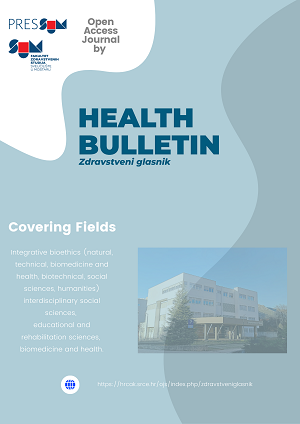RELATIONSHIP BETWEEN THE DISTANCE OF CARDIAC ARREST LOCATION FROM THE EMERGENCY MEDICAL DEPARTMENT AND THE FINAL OUTCOME OF CARDIOPULMONARY RESUSCITATION
Sažetak
Introduction: Cardiopulmonary arrest is a serious medical emergency that can be reversed with prompt and sufficient cardiopulmonary resuscitation (CPR). Out-of-hospital cardiac arrests (OHCA) occur on average at a rate of 60 per 100.000 people. Cardiopulmonary resuscitation must start immediately in order to achieve the desired outcome.
Aim: To investigate the association between proximity to the emergency department and the return of spontaneous circulation (ROSC).
Subjects and methods: This study is a single-center registry-based retrospective cohort study. All the patients from the cardiopulmonary resuscitation registry of the Emergency department of the Health Center Livno were included and divided into 2 groups: the patients who experienced cardiac arrest within a radius of less than five kilometers and the patients who experienced cardiac arrest within a radius of more than five kilometers.
Results: Patients who experienced OHCA within a radius of less than five kilometers had an overall better prognosis for achieving ROSC (p=0.002). Even though men experienced cardiac arrest at a higher percentage (74.1 %) than women, there was no significant difference regarding the final outcome. The total incidence did not differ regarding the initial cardiac rhythm.
Conclusion: Poviding prompt, sufficient CPR is essential for attaining the most favorable outcomes regarding OHCA.















